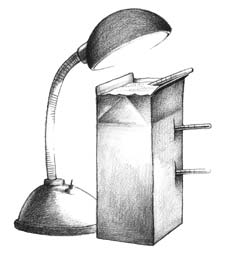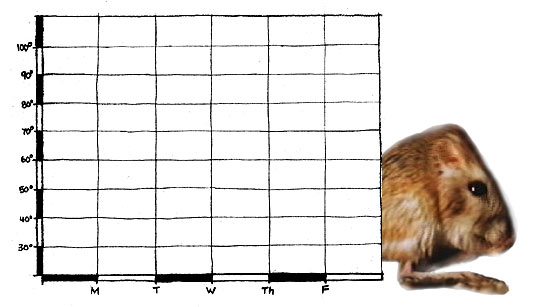![[Ocean Oasis - Teacher's Guide]](images/bnr-oo-tg.gif) |
 |
![[Ocean Oasis - Teacher's Guide]](images/bnr-oo-tg.gif) |
 |
|
|
![[Cool It: An Animal Adaptation]](images/coolit.gif)
How do animals keep cool in the desert? |
|
In the Film |
A nighttime scene shows a kangaroo rat going in and out of a burrow. The rat never drinks, but manufactures water through its metabolic processes. The rat takes advantage of ways to keep cool, including moving about during the night and living in a burrow during the day. |
|
Concept |
Desert animals have adapted to hot, dry conditions. |
|
Objective |
To explore ways desert animals keep cool |
|
Content |
Science, language arts |
|
Background |
Surface temperatures of desert soil can be extremely hot. Desert vegetation is sparse and cloud cover minimal. Thus, the sun shines unobstructed onto the soil. About half of the sun's heat is absorbed by the first few inches of soil and the other half is reflected back into the atmosphere. The temperature of the soil is also affected by dryness‹there is little water to evaporate and thus dissipate the heat. While desert daytime temperatures may be high, nighttime temperatures may drop dramatically. Radiant heat from the sun rapidly warms the soil and air during the day, but then escapes without barriers into the atmosphere at night. Desert animals have adapted to hot, dry conditions in a number of ways. Hot, exposed desert soils can be avoided by resting in the shade of a bush, on branches above ground, or in underground burrows. Moving about at night—being nocturnal—is another way to avoid the heat and conserve body fluids. |
|
On the Web |
A Field Guide page on the Kangaroo Rat. |
![[Materials]](images/materials.gif)
Part A Adaptations: no materials Part B Kangaroo Rat Burrow Box: half-gallon plastic or paper milk container (with top cut off), three thermometers, coarse-grain sand or dirt, sharp knife, goosenecked lamp with 60-watt bulb, paper, pencils Part C Night and Day: five or more high/low temperature readings from a desert area, graph paper, red and black markers |
![[Procedure]](images/procedure.gif)
Part A
Adaptations (whole class)

Part B
Kangaroo Rat Burrow Box (small groups)
Part C
Night and Day (individuals, small groups)

|
|
Local Connection
Key Words |
|
Continue to Activity 8: The Water Storers: Cactus Adaptations |
Teacher's Guide Contents
Field Guide | Site Index |
Ocean Oasis: The Film
|
|
© 2000 San Diego Natural History Museum |